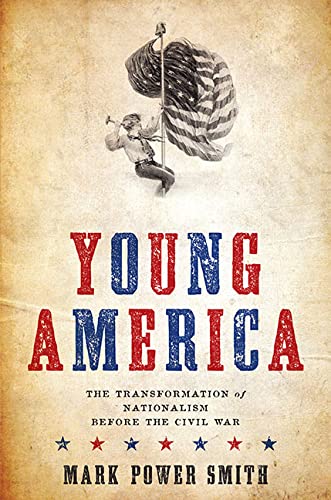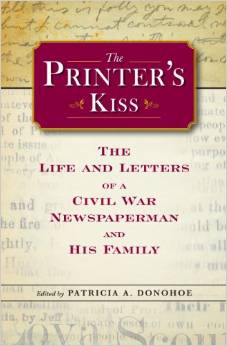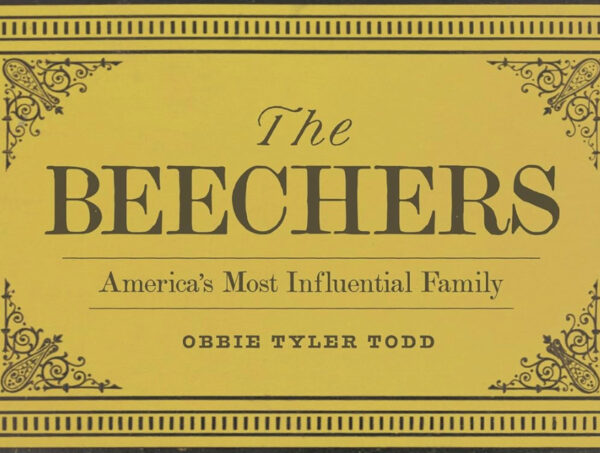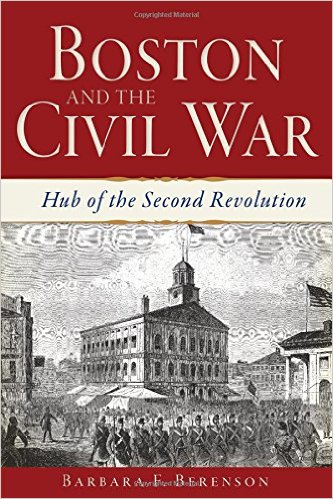Liar, Temptress, Soldier, Spy: Four Women Undercover in the Civil War by Karen Abbott. HarperCollins Publishers, 2014. Cloth, ISBN: 978-0062092892. $27.99.
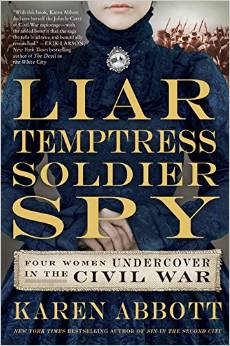 In this compelling popular history, New York Times bestselling author Karen Abbott tells the gripping story of four audacious women and their acts of espionage during the Civil War. Abbott skillfully intertwines the lives of the charming, young, southern spitfire, Belle Boyd; the beautiful and wily southern widow, Rose O’Neal Greenhow; the clever Richmond matron and Unionist, Elizabeth VanLew; and the Canadian expat and Union soldier, Emma Edmonds, whose pre-war assumption of a male identity enabled her simultaneously to join the army and flee her troubled past. Relying on both primary and secondary sources—including the women’s own memoirs, journals, and correspondence, as well as other diaries, newspapers, letters, the Official Records, contemporary monographs, and even oral histories with some of the women’s descendants—Abbott presents a rich and colorful sketch of these four unlikely spies and their significant contributions to the war effort in both the North and the South.
In this compelling popular history, New York Times bestselling author Karen Abbott tells the gripping story of four audacious women and their acts of espionage during the Civil War. Abbott skillfully intertwines the lives of the charming, young, southern spitfire, Belle Boyd; the beautiful and wily southern widow, Rose O’Neal Greenhow; the clever Richmond matron and Unionist, Elizabeth VanLew; and the Canadian expat and Union soldier, Emma Edmonds, whose pre-war assumption of a male identity enabled her simultaneously to join the army and flee her troubled past. Relying on both primary and secondary sources—including the women’s own memoirs, journals, and correspondence, as well as other diaries, newspapers, letters, the Official Records, contemporary monographs, and even oral histories with some of the women’s descendants—Abbott presents a rich and colorful sketch of these four unlikely spies and their significant contributions to the war effort in both the North and the South.
Had Abbott merely narrated the intriguing exploits of these four women and their impacts on the military and political events of the war, her book still would have made a fascinating and significant contribution to Civil War literature. Her discussions of the women’s secret ciphers and codes, the diverse makeup of their spy rings (some of which included slaves, free blacks, and even high-ranking officials in the opposing army), their various experiences in some of the most notorious prisons, and their encounters with blockade runners (as well as with members of the French and English royalty), form a compelling story. However, her work far surpasses traditional narrative history and biography. Rather, Abbott constructs a vivid portrait of Civil War America in which her four heroines illuminate the period’s cultural complexities, constraints, and contentions regarding gender roles, identity, and self-making.
Initially separating the women’s stories by chapters, Abbott develops each woman’s rich personal history, contextualizing their lives against the cultural backdrop of their respective societies. Closely attuned to the ways in which slavery, abolitionism, religion, patriarchy, and conceptions of respectability and femininity infiltrated the worldviews of both Victorian men and women and shaped the actions of Civil War Americans, Abbott is able to delve deeply into the mind of each woman. In doing so, she skillfully reconstructs their probable thought processes, the nature of their relationships, the ways they internalized the war’s many emotional challenges, and their evolving perceptions of self and society as the war unfolded around them. As the book progresses, Abbott eventually intertwines the four women’s stories within individual chapters to reflect the simultaneous, geographical intersection of the women’s lives in places like Washington, D.C., Richmond, and battlefields across Virginia. Abbott’s narrative structure also shows that over the course of the war, these diverse women’s distinct, individual identities as the “liar,” the “temptress,” the “soldier,” and the “spy” eventually became a collective identity. Abbott thus illuminates some of the key ways the war forced many women to reevaluate former conceptions of self, confounded their personal and societal relationships, blurred the boundaries of social and cultural identity, and politicized the daily work of women both inside and outside the home.
Abbott particularly excels at illuminating the ways in which, despite the rigid gender constraints and firm expectations for respectable femininity held by Victorian Americans, each of these four women’s experiences revealed the malleability of gender and class identity. Protected by their status as elite women, Greenhow, Boyd, and VanLew used privilege to their advantage, unabashedly flirting and charming vital information about opposing troop movements out of high-ranking enemy officers; boldly taunting government authorities and prison guards; brazenly lying or withholding information from official investigators; and answering enemy officials’ questions with angry retorts for which they, by virtue of their gender and class, could never be severely punished. Even Emma Edmonds embraced what Abbott calls the “most feminine of qualities”—self-sacrifice—to accomplish her most “masculine acts” as a soldier and spy in the Union army, her “two selves…work[ing] in perfect concert.” (397) Abbott’s brilliant treatment of the four women’s conscious engagement with, and ultimate manipulation of, their gender and class identities highlights one of the most significant cultural facets of Civil War and women’s history.
Abbott also captures the centrality of identity construction and reconstruction and the perils of self-making and re-making for the Victorian American, as well as the enormous angst that issues of identity, disguise, and social deception caused their contemporaries. Though certainly intrigued by the prospect of re-making oneself by adopting an altered set of manners and dress that might help one achieve an elevated social or economic ranking in society, nineteenth-century Americans were simultaneously terrified by the notion that an individual—and particularly a stranger—could so easily alter his or her identity to deceive others into welcoming that individual into their midst. Cultural historian Karen Halttunen explores these ideas in depth in her masterful book, Confidence Men and Painted Women: A Study of Middle-Class Culture in America, 1830-1870. Such malleability was especially dangerous during the Civil War, when, as Abbott shows, fears of spies and traitors abounded, in both the North and the South. Abbott taps into those possibilities and anxieties to show not only how her four women were able to succeed in their various acts of espionage for so long, but also how their constant manipulation and destabilization of identity fostered a pervasive, crippling sense of fear and paranoia in both the North and the South that obstructed both the strategic and the daily operations of the war effort.
One of the only critiques I have of Abbott’s excellent book concerns her citations and her treatment of a few sources. In her introduction, she states that “anything that appears between quotations” comes from a primary or secondary source (xiii); however, such sources are not always cited, leaving the academic reader to wonder exactly where that information—especially some of the more surprising facts or nuanced arguments—came from. Abbott does a fine job of explaining her use of certain source material that appears questionable, or as she states, full of “self-mythology” (xiii), either in the text itself or in the endnotes. However, in other instances, she appears to take some sources, such as wartime newspaper accounts of battles, particularly self-promoting sections of Belle Boyd’s memoirs, and early twentieth-century scholarship, at face value rather than interrogating that material for war-time sensationalism and “camp rumor,” personal agenda and braggadocio, and Lost Cause or ”reconciliationist” bias, respectively. She also places heavy emphasis on e-mail conversations with various historians and museum professionals, as well as on the oral histories conducted with VanLew’s descendants without much commentary on where, exactly, those individuals were getting their information from, and whether the oral histories could be corroborated by written documents.
However, these academic critiques are few and should not detract from the significant amount of quality research and writing in this popular history. Not only has Abbott presented an engaging narrative of these four fascinating females and Civil War spies, but she has also crafted a sophisticated work of popular cultural history—a sparsely populated genre—that is truly magnetic. By appealing emotionally and intellectually to her readers, Karen Abbott has produced an impressive, first-rate work of historical non-fiction that is certain to captivate the general public and academics alike.
Ashley Whitehead Luskey earned her Ph.D. in History at West Virginia University. Her dissertation was titled, “‘A Debt of Honor’: Elite Women’s Rituals of Cultural Authority in the Confederate Capital.”
